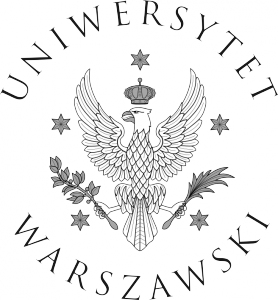Kędzierski Jacek
Zakład Chemii Teoretycznej i Strukturalnej
Pracownia Fizykochemii Dielektryków i Magnetyków
Analysis of thermal stability of bacteriophages T4 and MS2
Jacek Kędzierski
Promotor: prof. dr hab. Ewa Górecka
Opiekun: dr Jan Paczesny
Bacterial viruses called bacteriophages are considered to be a remedy for bacterial infections. They are also regarded as a model of a eukaryotic viruses. In order to use viruses as a drug or vaccines we need to transport them maintaining the cold chain. Otherwise they lose effectiveness to infect bacteria. We decided to analyze the thermal stability of two representative bacteriophages, i.e.: T4 and MS2. In order to do so we used in silico method of molecular dynamics. Such an approach seems to be beneficial, because we are able to analyze fluctuation of amino acids in atomic resolution.
The bacteriophage T4 is a virus which infects bacteria Escherichia coli. Its structure consists of a head containing genetic information, collar and a tail. The high pressure inside the head is the driving force to inject stored genomic material into bacteria. We focused on proteins of these compartment. The T4 head consist of four different proteins: GP23, GP24, SOC and HOC. The molecule GP23 is regarded as a protein that create the main framework of T4 head. The SOC protein also called Small Outer Capsid Protein was proven to provide a thermal stability to the virus.
The bacteriophage MS2 is also a natural enemy of bacteria E. coli. It consists of just one type of protein but in 180 copies, which form much more symmetrical virion. Virus MS2 is a closer relative to eukaryotic viruses and is often used as great model for studies on human disseizes.
Having that in mind we analyzed 100 ns simulations of those proteins, pinpointing changes in secondary structures, root square of deviation and root square of fluctuation in different temperatures. Such simulations were made with explicit water model. We were able to observe thermal changes in MS2 building trimer as well as T4’s SOC protein. Running molecular dynamics simulation in temperatures ranging from 300K to 500K, provided us with a necessary data to pinpoint a critical temperatures as well as activation energy of the deactivation process.
Literatura:
[1] Dalby and M. S. Shamsir, “Molecular Dynamics Simulations of the Temperature Induced Unfolding of Crambin Follow the Arrhenius Equation.,” F1000Research, vol. 4, p. 589, 2015.
[2] M. R. Machado, E. E. B. Guisasola, F. Klein, M. Sóñora, S. Silva, and S. Pantano, “The SIRAH force field 2.0: Altius, Fortius, Citius,” bioRxiv, p. 436774, Oct. 2018.
[3] L. Monticelli, S. K. Kandasamy, X. Periole, R. G. Larson, D. P. Tieleman, and S.-J. Marrink, “The MARTINI Coarse-Grained Force Field: Extension to Proteins,” J. Chem. Theory Comput., vol. 4, no. 5, pp. 819–834, May 2008.

